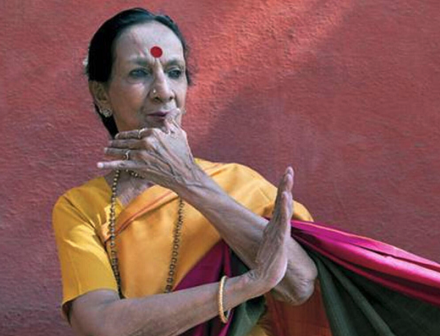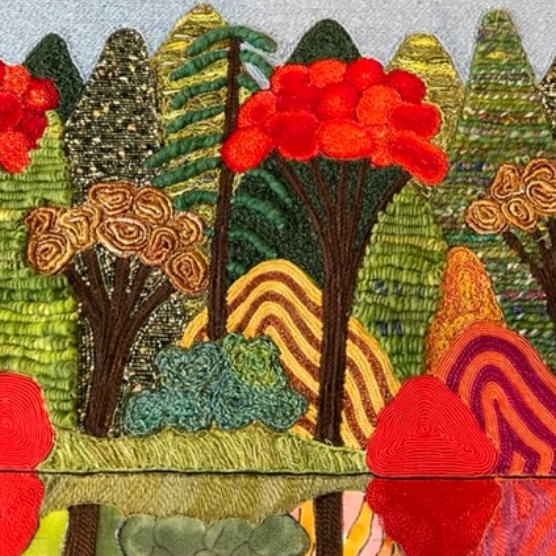THIS WEEK’S MUSE
MRINALINI SARABHAI

“I knew I would be a dancer when I was four years old. I started seeing everything in images. While listening to music at age four, I would create my own movement.”
Mrinalini Sarabhai was an Indian classical dancer, choreographer and instructor. Not only was she a gifted technical and creative performer, she used her creative platform to raise awareness about social issues in an era when women did not have a voice.
She was born in 1918, in Kerala—a coastal state on India’s tropical Malabar Coast—to a parliamentarian mother and a Harvard-educated lawyer father. Her mother was a political activist during India’s fight for independence from Britain—once briefly jailed for taking part in protests—and Sarabhai’s childhood was not only colored by law and politics, but also by social justice and equality.
She was sent to a boarding school in Switzerland in the 1930s, initially for health reasons. There she studied the ‘Dalcroze Style’ of Western dancing – after Swiss composer Émile Jaques-Dalcroze, who believed learning and experiencing music could be done most effectively through physical movement.
On returning to India after a short time at the American Academy of Dramatic Arts, Sarabhai began her formal dance training, specializing in the south Indian classical dance form of Bharatanatyam and the classical dance-drama of Kathakali, a story-telling dance style distinguished by the elaborately make-up and costumes. Sarabhai was the first woman to publicly perform Kathakali, and the first dancer to take these Indian dance traditions overseas.
Her international breakthrough came in 1949, before audiences seeing such performances for the first time. After dancing solo on the vast, empty stage at the Palais de Chaillot, Paris, she received a standing ovation from a bewitched crowd. The headline the next day read “La Bombe Atomique Des Hindous” – “The Hindu Atomic Bomb.”
Her dancing career was founded on a simple philosophy; to take classical, traditional Indian dance and give it a contemporary twist. Sarabhai wanted to be modern in her approach and delivery, whilst being careful to respectfully honor the tradition from which she came. This approach enabled her to bring a complex, unknown art form to a mass audience. And she did so with great success around the world for almost half a century.
“Be completely dedicated in your chosen dance, and practice hard. There are no shortcuts to technical perfection!”
She was also founder of the Darpana Academy of Performing Arts in 1949. In order to establish and run the Academy, she also had to take on the conservative—and exclusively male—opinion that said dancing was not meant for respectable women. Through the Academy, she helped make female dancers both accepted and respected.
The Academy also became known as a catalyst for social change through the arts, including public health, human rights, race, gender, disability, and women’s empowerment. When Sarabhai became aware of gender-based violence against women, she shone a light on the injustice by using dance and choreography, and the story-telling traditions of Kathakali, to publicly show what was happening, particularly around the specific problem of female dowry deaths. Her willingness to take a stand against social injustice has helped open a dialogue for change in India.
Besides dancing, choreography, and training many hundreds of students, Sarabhai was also a writer, poet, and environmentalist. She continued to dance until she was 90 and worked in the theatre for another two years. She died aged 97.
“The real self of an artiste lies in art, so when an artiste performs, all the pain, trauma and tension get released through art, be it dancing, painting, singing, writing or even martial arts.”
HAPPENING
PAINTING WITH FIBER

Wednesday, April 27, from 10am–noon
Wednesday, May 4, from 10am–1pm
Painting with Fiber
With Carol Fitzsimons
Create textures & colors of unique landscapes with fiber.
$70 – Member, $80 – Non-Member
DETAILS & TICKETS

